What is Angioedema?
Angioedema is an inflammatory skin reaction similar to urticaria characterized by the sudden appearance of an area of swelling of the skin, mucosa and submucosal tissues. Symptoms of angioedema can affect any part of the body, but the most commonly affected areas are the eyes, lips, tongue, throat, genitals, hands and feet.

In most cases, the reaction is harmless and leaves no lasting marks, even without treatment. The only danger is in the eventual involvement of the throat or tongue, as their severe swelling can cause rapid pharyngeal obstruction, dyspnea and loss of consciousness.
Difference with "Urticaria
Angioedema and urticaria are the result of the same pathological process, so they are similar in several respects:
- Often, both clinical manifestations coexist and overlap: urticaria is accompanied by angioedema in 40-85% of cases, while angioedema can occur without urticaria in only 10% of cases.
- Urticaria is less severe, affecting only the superficial layers of the skin. Angioedema, on the other hand, involves the deep subcutaneous tissues.
- Urticaria is characterized by the temporary onset of an erythematous and itchy reaction in well-defined areas of the dermis (appearance of more or less red and raised wheals). In angioedema, on the other hand, the skin retains a normal appearance, remaining free of wheals. Furthermore, it can occur without itching.
The main differences between urticaria and angioedema are shown in the table below:
Causes
Based on the causes of origin, angioedema can be classified into different forms: acute allergic, drug-induced (non-allergic), idiopathic, hereditary and acquired.
Allergic angioedema
The swelling is caused by an acute allergic reaction, almost always associated with urticaria, which occurs within 1-2 hours of exposure to the allergen. Sometimes, it is accompanied by anaphylaxis.
Reactions are self-limiting and subside within 1-3 days, but may arise again in case of repeated exposure or interaction with cross-reactive substances.
- Food allergy, especially to nuts, shellfish, milk and eggs; ingestion of foods containing particular additives, such as Tartrazine Yellow or sodium glutamate
- Some types of drugs, for example, penicillin, aspirin, non-steroidal anti-inflammatory drugs (NSAIDs), sulfonamides, and vaccines;
- Contrast media (imaging techniques);
- Insect bites, in particular, wasp and bee stings; snake or jellyfish stings;
- Natural rubber latex, such as gloves, catheters, balloons, and contraceptive devices.
Non-allergic drug-induced reaction
Some medications can cause angioedema as a side effect. The onset can occur days or months after the first intake of the drug, due to a cascade of effects that induce the activation of the kinine-kallikrein system, the metabolism of arachidonic acid and the generation of nitric oxide.
- Angiotensin-converting enzyme inhibitors (ACE inhibitors) used to treat hypertension are usually the main cause of angioedema. About one in four of the drug-induced form occurs during the first month of taking an ACE inhibitor. The remaining cases develop many months or even years after starting treatment.
- Bupropion;
- Vaccines;
- Selective serotonin reuptake inhibitors (SSRIs);
- Selective COX-2 inhibitors;
- Non-steroidal anti-inflammatory drugs (NSAIDs), such as ibuprofen;
- Angiotensin II receptor antagonists (ARB);
- Statins;
- Proton pump inhibitors (PPIs).
Idiopathic angioedema
In some cases, there is no known underlying cause of angioedema, although some factors can trigger symptoms. The idiopathic form is often chronic and relapsing and usually occurs with urticaria. In some people, where the condition recurs for years without an obvious cause, there may be an underlying autoimmune process.
- In most cases, the cause of angioedema is unknown;
- Some particular stimuli can induce idiopathic angioedema, such as: stress, infections, alcohol, caffeine, spicy food, extreme temperatures (example: hot bath or shower) and wearing tight clothes. Avoiding these triggers whenever possible can improve the symptoms;
- Recent research indicates that 30-50% of cases of idiopathic angioedema may be associated with some types of autoimmune disorders, including systemic lupus erythematosus.
Hereditary angioedema
Autosomal dominant hereditary disease. Hereditary angioedema is characterized by low levels of a serine protease inhibitor (C1 inhibitor or C1-INH), which helps keep blood vessels stable and regulates fluid leakage into the tissues. The decreased activity of the C1 inhibitor leads to an excess of kallikrein, which, in turn, produces bradykinin, a powerful vasodilator.
- Hereditary angioedema is a very rare but serious genetic disease;
- The condition usually presents in fairly young patients (in adolescence rather than early childhood);
- Hereditary angioedema is not usually accompanied by hives; it can cause sudden, severe, rapid-onset swelling of the face, arms, legs, hands, feet, genitals, digestive system, and airways. Abdominal cramps, nausea, and vomiting are the result of "involvement of the digestive tract, while difficulty in breathing is caused by swelling that obstructs the airways. Rarely, urinary retention may occur.
- Hereditary angioedema can occur without any provocation or be induced by precipitating factors, including local trauma, exercise, emotional stress, alcohol, and hormonal changes. Edema spreads slowly and can last for 3-4 days.
- 3 types: type I and II - mutation of the C1NH (SERPING1) gene on chromosome 11, which codes for the serpin protein inhibitor; type III - mutation of the gene on chromosome 12, which codes for coagulation factor XII.
- Type I: decrease in C1INH levels; Type II: normal levels, but reduced C1INH function; Type III: no detectable anomaly in C1INH, mainly affects the female sex (X-linked dominant).
Acquired deficiency of the C1 inhibitor
- C1-INH deficiency can be acquired over the course of life (not just genetically inherited). This is possible in people with lymphoma and in some types of autoimmune diseases such as systemic lupus erythematosus.
Whatever the cause of angioedema, the underlying pathological process is the same in all cases: the swelling is the result of the loss of fluid from the walls of the small blood vessels that supply the subcutaneous tissues.
In the skin, histamine and other inflammatory chemical mediators are released which cause redness, itching and swelling. Mast cells of the dermis or mucosa are involved in various events. Mast cell degranulation releases primary vasoactive mediators such as histamine, bradykinin and other kinins; subsequently, secondary mediators are released, such as leukotrienes and prostaglandins, which contribute to both early and late inflammatory responses, with increased vascular permeability and fluid leakage into the superficial tissues. The triggering factors and the mechanisms involved in the release of these inflammatory mediators allow us to define the different types of angioedema.
Symptoms
The clinical signs of angioedema may vary slightly between the different forms, but in general the following manifestations appear:
- Localized swelling, usually involving the periorbital area, lips, tongue, oropharynx and genitals
- The skin may appear normal, i.e. without hives or other rashes;
- Pain, heat, itching, tingling or burning in the affected areas;
Other symptoms may include:
- Abdominal pain caused by swelling of the mucous membrane of the gastrointestinal tract, with nausea, vomiting, cramps and diarrhea;
- Swelling of the bladder or urethra, which may cause difficulty passing urine;
- In severe cases, swelling of the throat and / or tongue can make it difficult to breathe and swallow.
Diagnosis
Diagnosing angioedema is relatively simple. Due to its distinctive appearance, a physician should be able to recognize it after a simple physical examination and a detailed medical history.
Further tests, such as blood tests, may be needed to define exactly the type of angioedema. The prick test can be performed to identify any allergens (allergic angioedema). Hereditary angioedema can be diagnosed with a blood test to check the level of proteins regulated by the C1-INH gene: a very low level confirms the disease. The diagnosis and management of hereditary angioedema are highly specialized and must be performed by a specialist in clinical immunology. Angioedema may be associated with other medical problems, such as iron deficiency, liver disease, and thyroid problems, which doctors will investigate with simple blood tests (useful for checking or ruling out the presence of these conditions). idiopathic is usually confirmed by a process known as "exclusion diagnosis"; in practice, the diagnosis is confirmed only after the various investigations have ruled out any other disease or condition with similar manifestations.
Treatment
Treatment of angioedema depends on the severity of the condition. In cases where the respiratory tract is involved, the first priority is to ensure that the airways are open. Patients may need emergency hospital care and need intubation.
In many cases, the swelling is self-limiting and resolves spontaneously after a few hours or days. In the meantime, to relieve milder symptoms, you can try these measures:
- Eliminate specific triggering stimuli;
- Take a cold (but not too much) shower or apply a cold compress to the affected area;
- Wear loose clothing;
- Avoid rubbing or scratching the affected area;
- Take an antihistamine to relieve itching.
In severe cases, if the swelling, itching or pain is persistent, the following medications may be indicated:
- Oral or intravenous corticosteroids;
- Antihistamines by mouth or by injection;
- Injections of adrenaline (epinephrine).
The goal of treatment for angioedema is to reduce symptoms to a tolerable level capable of ensuring normal activities (for example, work or night rest).
Angioedema associated with chronic autoimmune or idiopathic urticaria is often difficult to treat and the response to medication is variable. Generally, the following treatment steps are recommended, where each step is added to the previous one, in case it does not produce an inadequate response:
- Stage 1: non-sedating antihistamines, for example cetirizine;
- Stage 2: sedative antihistamines, for example, diphenhydramine;
- Phase 3:
- a) oral corticosteroids, for example, prednisone;
- b) immunosuppressants, for example cyclosporine and methotrexate.

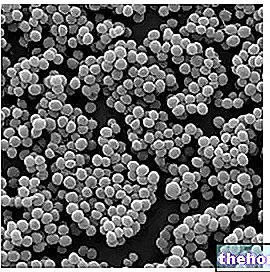
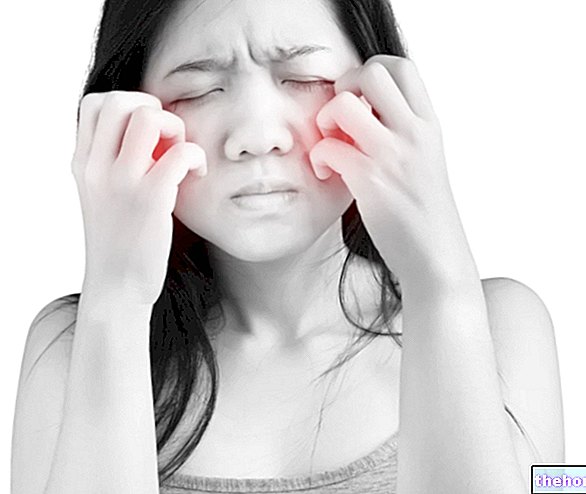
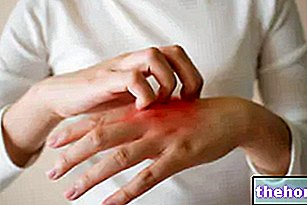

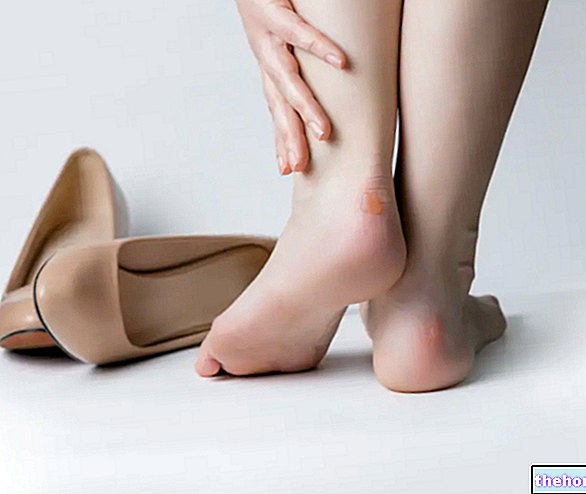
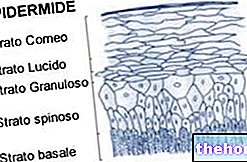


.jpg)


















